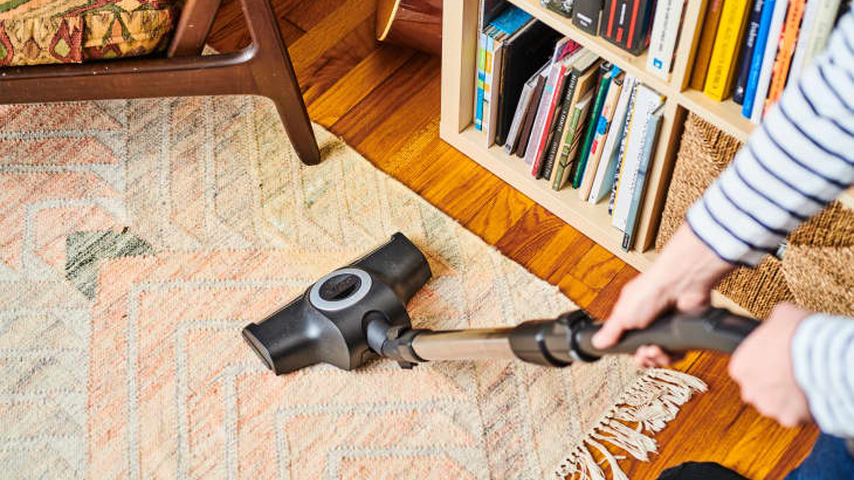Transform Your Bedroom: Effective Strategies to Keep Dust from Accumulating on Your Bed
Discover effective strategies to keep dust at bay in your bedroom. Learn cleaning routines, smart organizing, and air quality controls for better sleep.
This frustrating experience opened my eyes to the significant impact a clean sleeping environment has on our overall health and well-being. Dust is not just a visual nuisance; it houses various allergens that disturb our comfort and hinder restful sleep. A tidy bed minimizes these irritants, creating a tranquil space that enhances sleep quality and rejuvenates the mind. Maintaining a clean sleeping area transcends luxury—it's necessary for physical and mental wellness.
Understanding Dust and Its Sources

Dust is a collection of tiny particles accumulated in various environments, particularly our homes. Common dust sources include skin flakes, which naturally shed as we go about our daily lives; pet dander, composed of skin cells, fur, and saliva from our beloved pets; and pollen from trees, grasses, and flowers that can find its way indoors. Additionally, dust mites, mold spores, and fibers from clothing and upholstery are crucial contributors to dust in our living spaces.
Dust settles on surfaces through sedimentation, whereby gravity pulls lighter particles from the air to the ground. This process can unfold rapidly, dusting fabrics, especially in bedrooms with limited airflow due to closed windows and doors.
Dust has severe ramifications, particularly for individuals suffering from allergies or respiratory issues. It harbors allergens like dust mites, pet dander, and pollen, potentially triggering allergic reactions or exacerbating asthma symptoms. Keeping dust under control is essential for sustaining a healthy sleeping environment, enabling restful nights, and promoting overall well-being.
Regular Cleaning Routines
A dust-free bedroom is vital for a healthy sleeping atmosphere. Here's how to establish effective daily, weekly, and seasonal cleaning routines to manage dust effectively.
Daily Habits
A great way to ensure a dusty room is to start each day with a few simple habits that can keep dust at bay. Making your bed every morning is an effective way to deter dust from settling on bedding. Following this, grab a microfiber cloth and quickly wipe surfaces, including nightstands and dressers. This small action clears away dust and sets a positive tone for cleanliness as you begin your day.
Weekly Tasks
Setting aside time each week for thorough cleaning is crucial. Start by washing bedding items like sheets and pillowcases in hot water to eliminate dust mites and allergens. Pay particular attention to high-dust areas, such as vacuuming pillows, bed frames, and the spaces beneath the bed where dust is likely to gather. Utilizing a vacuum cleaner with a HEPA filter can greatly reduce the number of dust particles circulating back into the air.
Seasonal Deep Cleaning

Once every season, engage in deep cleaning to enhance your sleep space. This includes washing your duvets and mattress protectors and flipping or rotating your mattress for even wear. Schedule these tasks every three months to achieve a consistently dust-free sanctuary. Regularly checking your air vents and replacing air filters can also help manage dust levels and improve indoor air quality. Incorporating these routines will undoubtedly create a fresh bedroom and promote better sleep.
The Role of Bedding Materials
The materials used in bedding play a significant role in dust attraction and accumulation. Natural fibers like cotton are breathable and comfortable but can trap dust mites and allergens if improperly maintained. Microfiber, on the other hand, while soft and easily washable, can generate static electricity, attracting more dust to its surface.
Choosing hypoallergenic fabrics can be especially beneficial for individuals sensitive to allergens. These materials are specifically crafted to resist dust mites and other allergens, making it easier to keep your bedding clean and fresh. Furthermore, using allergen-resistant covers for pillows and mattresses provides an extra protective layer, further reducing the risk of dust accumulation.
Another effective strategy to combat dust build-up is regularly replacing pillows and mattresses. Over time, these items can harbor dust mites and bacteria, necessitating replacement every few years. Engaging in a proactive cleaning routine by washing bedding weekly and replacing older items enhances bedroom comfort and promotes better health by maintaining low dust levels.
Incorporating Air Quality Controls
Maintaining good air quality in the bedroom is crucial for minimizing dust accumulation and fostering a healthy sleeping space. One effective strategy involves using air purifiers, which actively filter out dust particles and other allergens, leading to cleaner air. Air purifiers with HEPA filters can capture up to 99.97% of particles as small as 0.3 microns, significantly reducing the number of dust mites, pollen, and pet dander settling in the room. This approach not only aids in dust reduction but also supports overall respiratory health, improving sleep quality.
Another essential aspect of keeping a dust-free bedroom involves managing humidity levels. High humidity encourages mold and dust mite growth, as both thrive in damp conditions. Ideally, humidity levels should be maintained between 30% and 50% for optimal results. Using dehumidifiers can effectively lower excess moisture in the air, while humidistats help monitor humidity levels consistently. Ensuring vents are unobstructed and windows closed during humid weather further controls moisture. Together, these strategies contribute significantly to creating a cleaner, more inviting bedroom environment free from dust.
Smart Organizing Solutions to Minimize Dust

Implementing effective organizing strategies is essential in significantly reducing dust accumulation in your bedroom. Start by decluttering areas around your bed—fewer items lead to fewer surfaces where dust can settle. Keeping bedside tables tidy and limiting decor to essential pieces can help minimize dust traps.
Utilizing under-bed storage solutions can also be beneficial. Storing seasonal clothing, shoes, or extra bedding in bins kept beneath your bed clears up room space and helps maintain cleanliness by keeping dust at bay.
Additionally, embracing a minimalistic approach to decor is vital. Opt for simple furniture designs and avoid intricate patterns that may attract dust. The cleaner and sleeker your bedroom appears, the easier it will be to manage dust levels while ensuring a healthier sleeping environment. By committing to a more organized space, you're closer to achieving a fresh bedroom that promotes better air quality and comfort for restful nights.
Personal Habits to Reduce Dust Production
Creating a dust-free haven in your bedroom starts with the personal habits we embrace daily. One effective habit is changing clothes immediately upon arriving home. Outdoor garments can carry dust and allergens, so switching into clean attire preserves freshness within your living space. Furthermore, grooming pets regularly is essential; brushing them outdoors substantially decreases the amount of fur and dander circulating inside.
Another impactful yet simple habit involves enforcing a no-shoes rule within the bedroom. Shoes can carry dust and dirt particles contributing to an unclean sleeping area. Encouraging family members and guests to remove their shoes at the entrance establishes a standard of cleanliness. Integrating these routines into your daily life can lead to a consistently cleaner and healthier bedroom.
By adopting these small but effective habits, you can craft a sanctuary free from dust accumulation, ultimately enhancing your well-being and sleep quality.
Create Your Sanctuary for Better Sleep
Fostering a dust-free sleeping environment is paramount for both health and personal comfort. By embracing the practices discussed in this article—like regular cleaning and choosing suitable materials—readers can greatly enhance their sleep quality and overall well-being. Adopting these strategies promises a healthier, more restorative sleep experience.






